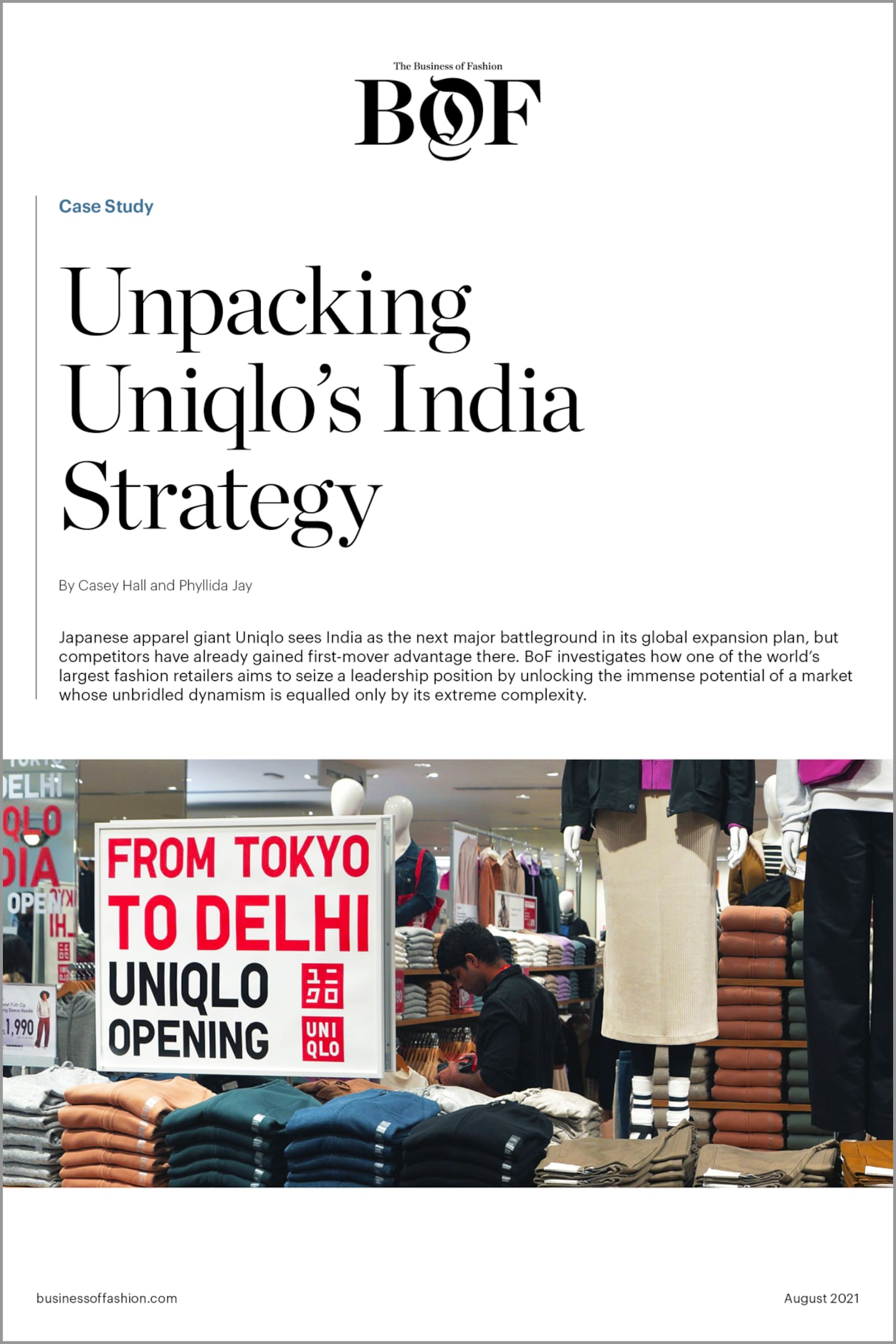
The Business of Fashion
Agenda-setting intelligence, analysis and advice for the global fashion community.

Agenda-setting intelligence, analysis and advice for the global fashion community.

Uniqlo is one of the world’s largest fashion retailers, but its success has been built on unconventional foundations. The Japanese giant pays little heed to fashion trends, relying instead on its high-tech fabrications and wardrobe staples to win over consumers.
Though the brand’s roots go back as far as 1949, it wasn’t until the 1980s that the modern era of Uniqlo began. Following the opening of a store in Hiroshima called Unique Clothing Warehouse by a company that would later become Fast Retailing, the retailer was rebranded “Uniqlo.” Even though its new name was the result of a clerical error, Fast Retailing founder and current chairman, president and chief executive, Tadashi Yanai, decided to embrace the registration blunder as he considered it a “beautiful” mistake.
By the mid-1990s, when many were seeking value for money during Japan’s “lost decade” of economic stagnation and an alternative to the perceived whims and excesses of luxury fashion, the brand became a household name thanks to its upbeat, no-nonsense designs at affordable prices.
Uniqlo’s subsequent expansion into markets across Asia, Europe and North America elevated the brand into a league of global behemoths that included high street players H&M and Zara, making it a serious contender in the mass market. But unlike its fast fashion rivals, Uniqlo does not churn out new styles in lightning-fast production cycles. Instead, it trades on timelessness and a design philosophy of “lifewear.”
ADVERTISEMENT
In the nine-month period ending May 31, 2021, Uniqlo-owner, Fast Retailing, reported consolidated revenues of 1.7 trillion yen ($15.49 billion), a 9.9 percent increase from the same period a year earlier, while operating profit rose 72.1 percent to 227.8 billion yen ($2.1 billion).
With over 2,300 stores worldwide and a stronghold in China where it outperforms competitors, Uniqlo now has its sights set on India. The company’s ambitions for the country are considerable, with Yanai indicating that he wants Uniqlo to become the “best-selling retailer in India.”
To make that happen, the company will need to apply — and adapt — lessons it has learned from successful expansion elsewhere in Asia, while taking into account the complexity and singularity of the Indian market. It will also need to make up ground, having only opened its first India store in 2019, almost a decade after the entry of some of its competitors who have built store networks that currently dwarf Uniqlo’s count of six.
But Uniqlo has proven itself adept at seizing a leadership position in Asian markets where its rivals had a first-mover advantage. Can it do the same in India, a colossal yet complicated market which some international brands have yet to prioritise or dismiss as being overestimated as a short-term opportunity?
To be sure, Uniqlo’s India roll-out has been severely disrupted by the pandemic, making it difficult to judge whether it has a winning strategy. Moreover, some of the challenges and uncertainties characterising the market under normal circumstances have only intensified since the devastating second wave of Covid-19 infections hit. Uniqlo, like most brands, faces a long, uphill battle in India but stands to reap immense rewards if it does succeed.
In this case study, BoF examines Uniqlo’s opportunity in India based on an appraisal of its early manoeuvres there and the legacy of the strategies it employed elsewhere. Set against the backdrop of both global and local competitors, it analyses the rapidly changing dynamics of India’s fashion market and the multifaceted behaviour of its diverse consumers, whom Uniqlo will need to win over to achieve its goal of becoming number one.
Of course, the challenges and opportunities the India market presents for Uniqlo are shared by many other international fashion retailers eyeing Asia’s next major consumer giant. In examining the hows and whys of Uniqlo’s approach to India, this case study also reveals important strategic considerations for other brands looking to make their mark in this fast-changing and incredibly complex country.
Click below to read the case study now.
Editor’s Note: This case study was corrected on August 13, 2021. A previous version misstated that Fast Retailing manufacturing takes place in Singapore, Vietnam, the Philippines, Malaysia and India, among other markets. This is incorrect. Fast Retailing does not manufacture in Singapore or the Philippines at the time of writing.
This week’s round-up of global markets fashion business news also features the China Duty Free Group, Uniqlo’s Japanese owner and a pan-African e-commerce platform in Côte d’Ivoire.
Affluent members of the Indian diaspora are underserved by fashion retailers, but dedicated e-commerce sites are not a silver bullet for Indian designers aiming to reach them.
This week’s round-up of global markets fashion business news also features Brazil’s JHSF, the Abu Dhabi Investment Authority and the impact of Taiwan’s earthquake on textile supply chains.
This week’s round-up of global markets fashion business news also features Dubai’s Majid Al Futtaim, a Polish fashion giant‘s Russia controversy and the bombing of a Malaysian retailer over blasphemous socks.